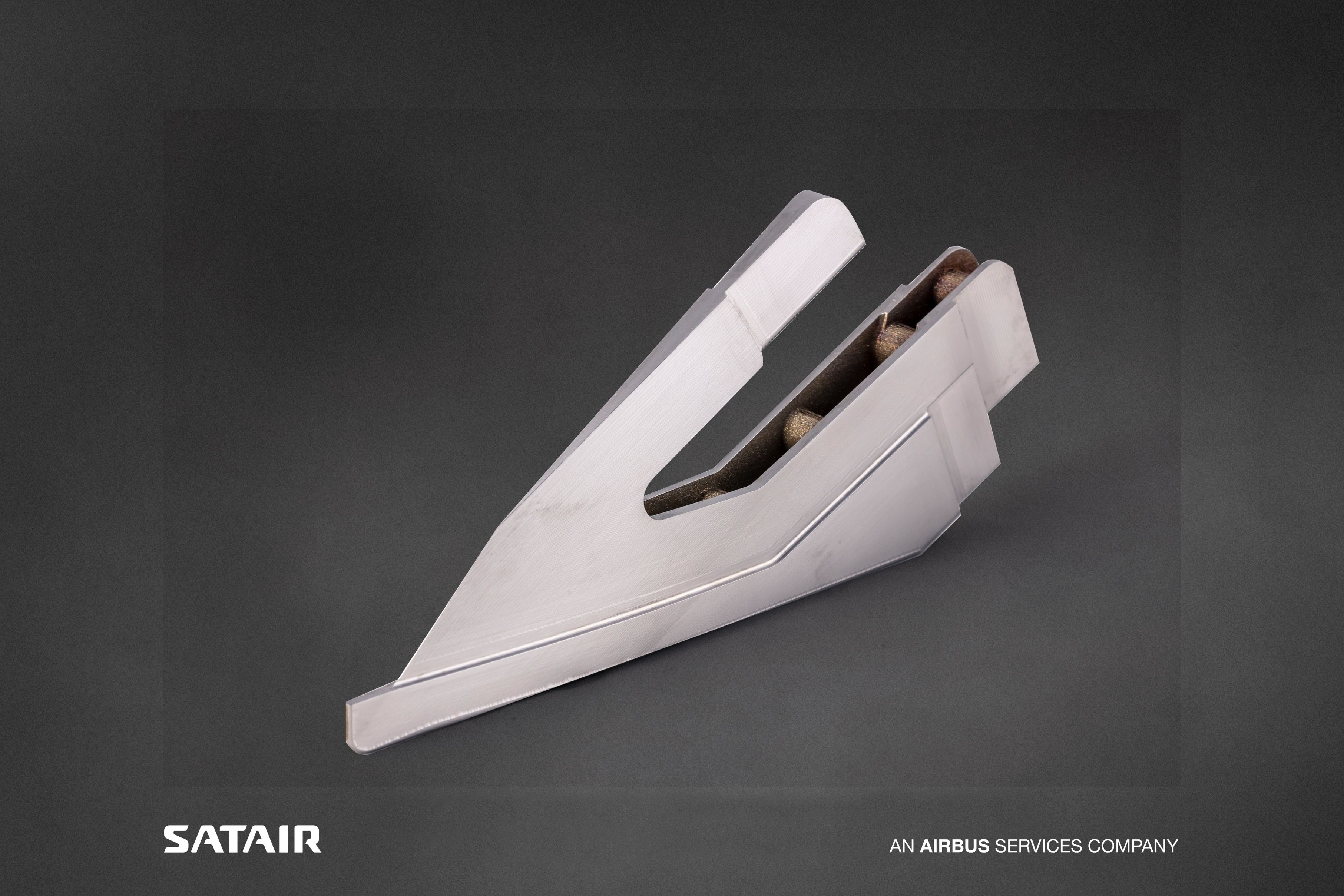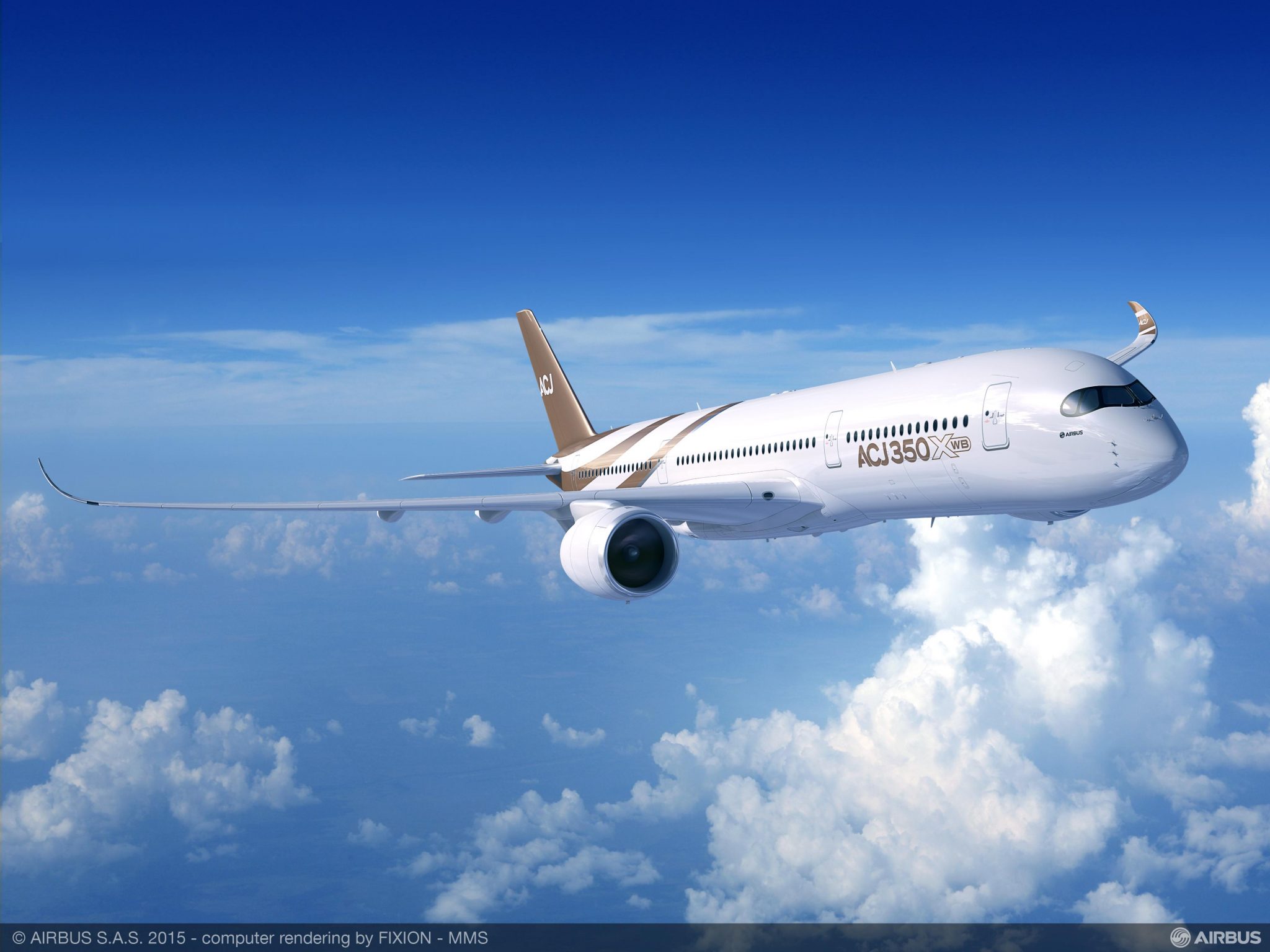Airbus subsidiary and global supplier of aircraft parts, Satair has provided a U.S. airline customer with what it claims is the “first certified metal printed flying spare part.”
Satair developed the 3D printed A320ceo wingtip fences after the part became unobtainable from the original supplier, who had difficulties providing the cast part. Additive manufacturing was selected as the alternate manufacturing method as a result of competitive cost and lead-time factors, in addition to increasing the flexibility of part production.
“We received an order for replacement parts and our AOG procurement department turned to the additive manufacturing team for a solution,” said Felix Hammerschmidt, HO Additive Manufacturing at Satair. “After a short pre-assessment, the part was handed over to the RapidSpares design offices at Airbus.
“Using a new certification process they were able to re-certify the former cast part within five weeks and adapt it to titanium, which is a qualified airworthy additive manufacturing material.”

3D printing spare parts for aerospace
Although Satair’s A320ceo wingtip fences may be the first certified metal printed flying spare part, elsewhere in the aerospace sector 3D printing has been utilized for some time in the design and manufacture of prototypes and functional parts.
Earlier this year, Additive Flight Solutions (AFS), a joint venture between 3D printer manufacturer Stratasys and Singaporian aircraft specialist SIA Engineering Company (SIAEC), received AS9100D Certification for its 3D printed aerospace parts. Stratasys’ 3D printers have also been leveraged by other firms in this area, including UK-based global engineering firm GKN Aerospace to reduce its production times, alongside aerospace specialist IDEC and prototyping service provider Wehl & Partner, who used a Stratasys 3D printer to cut the cost and material waste involved with composite molding.
In January, American multinational aerospace giant Boeing completed the first flight of its 777X jet, powered by twin GE9X engines from GE Additive which are equipped with over 300 3D printed parts. The new set of airplanes is expected to enter service in 2021.
Airbus itself is no stranger to 3D printing, having also previously worked with Stratasys and Farsoon Technologies, making 3D printed plastics for civil aviation. Earlier this year, Airbus initiated a large-scale manufacturing project with researchers from the University of Sheffield’s Advanced Manufacturing Research Centre (AMRC). The researchers used Formlabs’ 3D printing technology to produce 500 drilling caps in two days, cutting the conventional lead time down by weeks.
Prior to this, Australian metal 3D printer manufacturer Titomic received a Purchase Order for a Statement of Work from Airbus, concerning near-net demonstrator parts for a targeted application 3D printed using the firm’s Titomic Kinetic Fusion (TKF) additive manufacturing technology.

3D printing the A320ceo wingtip fences
Satair’s A320ceo wingtip fences are installed in four different versions; starboard, port, upper, and lower, with these four parts referred to as a shipset. The printing of the wingtips took place at the Reference Manufacturing Shop in Airbus Filton, which was process qualified last year, with the build job for one shipset taking 26 hours.
After printing, the parts require various post-processing steps to become airworthy, and are supplied with EASA Form 1 certification approval. The first shipset was delivered to the airline earlier this year, making it the first operator with an Airbus metal 3D printed spare part.
Compared to the conventional manufacturing process of the part, non-recurring costs were reduced by 45%, making it a far more cost-effective solution for customers, and with a significantly shortened lead time. This tailored 3D printing solution also reduces the likelihood of an AOG (Aircraft on the Ground) for this specific airplane.
“Satair is leading the way in providing additive manufactured parts for the aviation aftermarket and we currently have more than 300 part numbers certified for the technology covering every Airbus aircraft famil type including tools and Ground Support Equipment,” said Bart Jeijnen, CEO of Satair. “With more than 7,000 A320ceo Family aircraft in service worldwide, the demand for this specific additive manufactured part is likely to increase and with this Additive Manufacturing supply chain now in place, we will be able to produce these parts within a shorter lead time.
“Four more customers have already requested that same part following this successful delivery.”
Reijnen added that Satair had identified other titanium parts for which 3D printing could become a “more economical” way of production, citing higher flexibility and shorter lead times.
Subscribe to the 3D Printing Industry newsletter for the latest news in additive manufacturing. You can also stay connected by following us on Twitter and liking us on Facebook.
Be sure to subscribe to the Another Dimension podcast on your chosen podcast player to make sure you never miss an episode.
Looking for a career in additive manufacturing? Visit 3D Printing Jobs for a selection of roles in the industry.
Featured image shows the tailored additive manufactured solution reduces the likelihood of an AOG for this specific aircraft. Image via Airbus.


